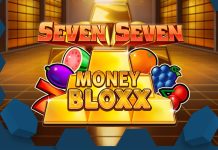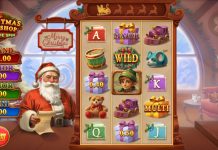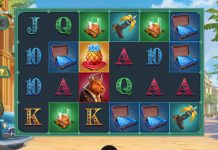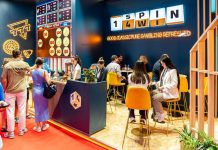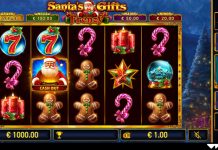Slot suppliers are continuing to expand and develop their use of promotional tools as a way of driving engagement amongst players and strengthening retention levels for their operator partners.
Adam Wilson, CEO at Splash Tech, Katarzyna Pysz, Head of Gamification at 3 Oaks Gaming, Michael Tadross, Director of Account Management at Playson, and Marcin Trafiałek, Promo Tools Specialist at Wazdan, continue the conversation.
What metrics do operators and providers use to measure the success of promotional tools?

Adam Wilson: Every operator will have their own KPIs to measure success. These might concern player deposits and bets placed, comparing periods pre and post-promotion, whereas for suppliers they might be more closely associated with player numbers and overall revenues.
By closely monitoring KPIs, the effectiveness of a particular promotional tool can be carefully measured and lessons can be taken that inform future campaigns. It’s also crucial to look at how promotional tools are performing in real-time, with business intelligence tracking and analysing performance.
Katarzyna Pysz: The success of promotional tools is measured through several key metrics. Player acquisition is the primary indicator—does the promotion attract players to our games over competitors’?
We then assess session length, ensuring players stay engaged longer during the promotion. Gamification plays a key role here, using features that entertain and motivate players to collect points or progress through stages.
Another important metric is betting activity. Higher qualifying bets set up for promotion require players to increase their wagers to be qualified for promotional prizes. Uplift in wagers is a desired outcome as well. For Chief Product Officers, metrics such as uplift in number of active players, new player acquisition, and longer gaming sessions reflect the overall effectiveness and player experience.
Tailoring metrics to the audience is crucial when presenting results. For commercial teams, metrics like gross gaming revenue and return on investment are critical, as they highlight financial impacts.
Finally, user feedback is essential for refining our promotional tools. Insights from players help us iterate on features to ensure they remain aligned with industry trends and player expectations, maintaining long-term engagement and satisfaction.

Michael Tadross: The success of promotional tools can be measured using various key metrics, depending on the specific goals of each promotion. From the provider’s perspective, the most important KPIs are bets, unique participants, and GGR.
Operators might focus on deposits, especially for promotions targeting player spend. Comparing metrics such as bets and deposits before and during the promotion, or with the same period last month, offers valuable insights into its success.
Additionally, operators can analyse participant activity against non-participant behaviour to gauge effectiveness. Another common metric used across both sides is the number of rounds, as an increase in bets typically indicates a successful promotion, regardless of whether it comes from more players, higher individual bets, or longer gaming sessions. Tracking these KPIs ensures operators can assess the impact and optimise future promotions for better results.
Marcin Trafiałek: As a provider, we focus on key metrics such as player engagement levels, session duration, and reward appeal, all benchmarked against a variety of KPIs. These data points allow us to evaluate player behavior and optimise promotional tools to maximize growth and retention. With Wazdan, every metric translates into actionable insights and measurable success.
With 2025 just around the corner, how do you see promotional tools continuing to evolve?

KP: The future of promotional tools is exciting, with endless opportunities for innovation and personalisation. One key area is social interaction, enabling players to chat and share progress, much like in land-based casinos, fostering community and excitement.
Customisation is another exciting avenue. Imagine players creating personalised avatars, similar to the Tamagotchi craze in the 90’s, which they nurture and develop through in-game achievements. These avatars could unlock new features, deepening players’ emotional connection to the game.
Looking further ahead, augmented reality offers thrilling possibilities. Picture a fortune wheel “jumping” out of the screen into a player’s living room, where they can spin it in real time to win prizes. With technology advancing rapidly, these ideas are within reach, promising a future where promotional tools are immersive, interactive, and truly memorable.
MT (Playson): With the intense level of competition in the RNG product segment, promotional tools look set to evolve at an increasing rate. While high-quality game content remains crucial, promotional tools will play an increasingly vital role in enhancing player interaction with games in a seamless, engaging, and rewarding manner. This evolution will benefit both operators and providers, with more innovative tools expected to emerge as providers strive to revolutionise player engagement.

Looking ahead, it is clear that a single, game-changing idea could disrupt the industry. As we’ve seen in recent years, one well-executed concept can revolutionise the market and introduce new, high-quality competitors. The next big promotional tool may already be in development, waiting for the right moment to redefine how players engage with games and operators maximise player loyalty.
MT (Wazdan): Big surprises are on the horizon. We’re preparing innovations that will redefine player engagement and operator success. With personalisation, gamification, and advanced technology leading the way, the future of promotional tools promises to deliver gains for everyone involved. Stay tuned – there’s more to come.
AW: Promotional tools cannot and should not be a one-size-fits-all solution. To be effective, tools must be personalised to a user’s preferences and their value.
This can include ad hoc promotions to specific players, but the key is to make sure players receive enticing promotions. With so many variables across player preferences, having an engine that can be both cohort and player-specific is mandatory.
Competition for the attention of players will continue to be intense in 2025 and operators cannot afford to neglect tools that engage in a highly targeted, relevant way.
